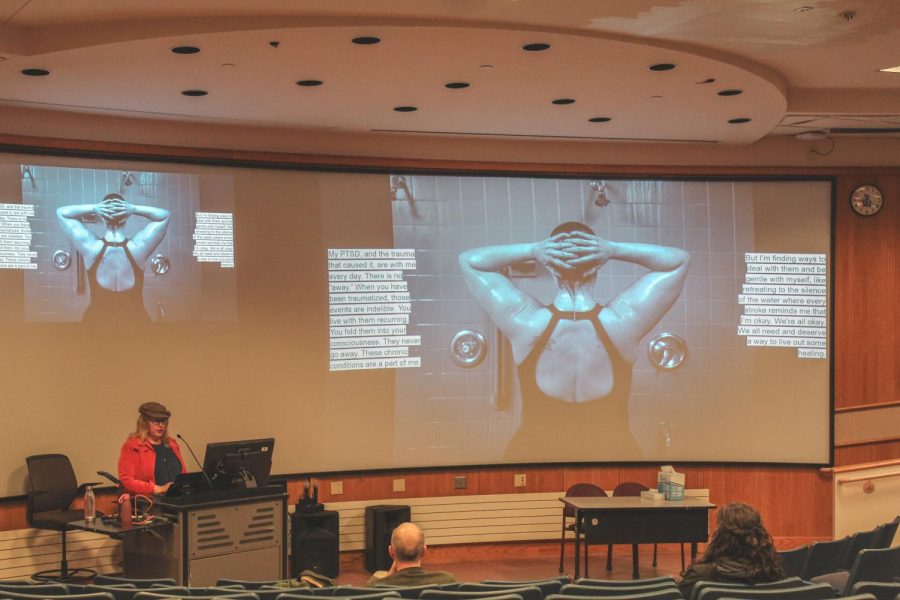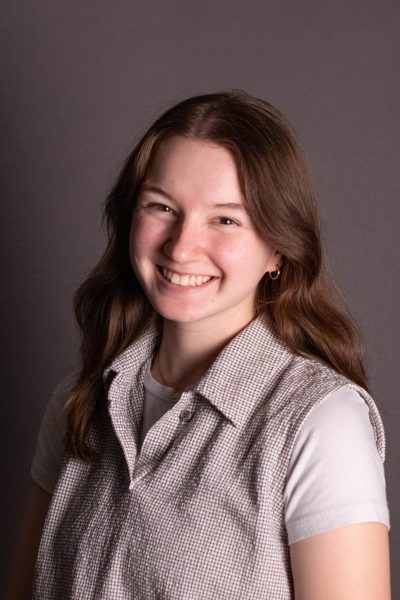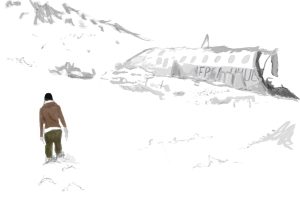Final Common Book event of spring 2022: “Visible/Invisible: Landscapes of Mental Illness”
Joy Davis Ripley presented her photography project highlighting physical landscapes that connect with mental illness through her lens. “I just want to get some of these hard conversations out there in the public eye so that people can feel less alone,” Ripley said.
March 30, 2022
The last event of this year’s Common Book Program took place this past Tuesday, March 22, hosted by Joy Davis Ripley, previously a professor at Winona State University. Davis shared her photography project called “Visible/Invisible: Landscapes of Mental Illness” which highlighted a variety of physical landscapes that helped represent mental illnesses.
The Common Book program this year has focused primarily on the importance of empathy, which is deeply discussed in Jamil Zaki’s book “A War for Kindness”. “Visible/Invisible” sought to continue this empathy-centered conversation by touching on the various impacts of mental illness.
Ripley noted several times during the event the differences in perspectives regarding mental illness among different generations.
“I think that especially older generations have felt a lot of shame be- cause [mental health is] something that hasn’t really been talked about openly just because it’s been so stigmatized,” Ripley said. “I think there are many people in younger generations who are trying to resist that sense of shame.”
April Herndon, English professor and director of the Common Book Program, discussed the impact of the project on not only the subjects in the photography but also the community as a whole.
“From my perspective, the project was great because not only did it make the folks who had the mental illness feel empowered in how they wanted to represent them- selves, but it also meant that you had a lot of variety in those representations,” Herndon said.
“Visible/Invisible” highlights several individuals and couples who suffer from an array of mental illnesses, including depression, anxiety, post-traumatic stress dis- order and many others. Each of the subjects gave a written statement on how their specific mental illness impacts their daily lives, paired with photographs of them in an assortment of landscapes that connect with their stories.
For example, one of the subjects was photographed in water, where the individual said they felt safest. Ripley’s photograph of herself featured her in front of a very large landscape/overhang; the group at the event then discussed how nature can be both humbling and inspiring at the same time, which Ripley attested to.
The event fit very nicely in the Common Book Program, as empathy was discussed as a very important skill to practice when considering mental illness.
“[Visible/Invisible] gives a conversation started among folks about not just folks in our community at large, but also folks on our campus, how many people are struggling with mental health issues and how we can support each other and be more empathetic and kind about those struggles,” Herndon said.
Ripley started her photography journey after becoming a stay-at-home parent. She found solace in the act of taking photographs of landscapes and the people around her.
“As I was taking pictures, I was also distancing myself from the chaos of my life and feeling a great deal more peace,” Ripley said. Halfway through the event, Ripley had attendees draw their own landscape that represents a specific feeling to themselves. This interactive part of the event brought the audience together in a way that is, arguably, not felt on a daily basis. Raw feelings were shared with a level of transparency regarding the drawn personal landscapes and daily struggles.
The event not only sparked conversation about mental illness, but also pushed the importance of being empathetic and understanding to those who deal with the daily struggles that come with mental illness. The photographs and accompanying statements were raw and beautiful, providing another step toward the destigmatization of mental illness, especially in older generations.
“You have these people who are dealing with very serious things on the inside,” Ripley said. “But they’re walking around and many people don’t know what’s going on with them because they can’t see inside.”
Ripley’s artistry is also presented around the community of Winona, which is where Herndon first got the idea to include it into the Common Book Program. Making “Visible/ Invisible” a community wide event has been very important in continuing this important conversation through the visual representations of mental illness.
With this year’s Common Book Program coming to an end, it is time to start thinking about next year’s programming. The Common Book for next year will be voted on and announced soon, so Winona State members should keep on the lookout.
As for Ripley, she has a new project coming out soon regarding the passing of a family member and familial abuse; Ripley hopes to break down the barrier of “polite social conversation” and to start talking about important but difficult issues that happen in many people’s lives daily. Ripley’s art provides an opportunity for important, forthright conversation and space for deep understanding.
“I just want to get some of these hard conversations out there in the public eye so that people can feel less alone,” Ripley said.



































